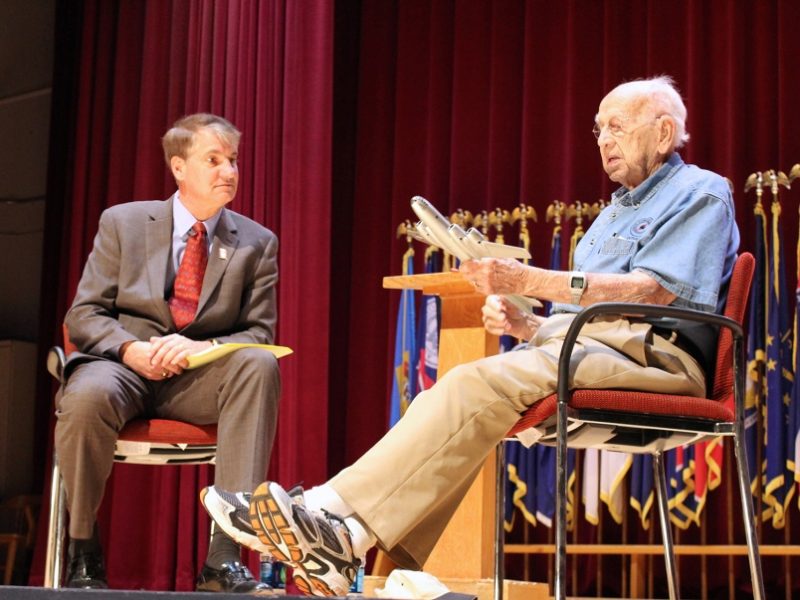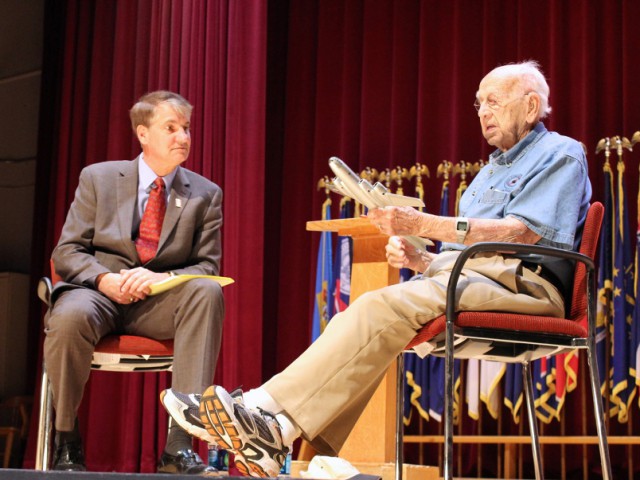A 92 year old World War Two B-29 pilot has visited US Marines at Marine Corps Recruit Depot San Diego to tell them his story and experiences during the war. Second Lieutenant Raymond Biel was one of seven B-29 pilots who took part in the first outgoing operation to bomb Japan with atomic weapons.
Biel flew out on his covert operation in early August 1945 to gauge and report on weather conditions. It wasn’t until he returned to base on an island in the Pacific that he was told his information will be used to inform the planned mission to drop the atomic bombs on Nagasaki and Hiroshima.
Biel was originally from Chicago and had only just graduated high school in 1940. He was planning on going to college, but when Japan attacked Pearl Harbour he was impelled to join the war effort and so joined the US Army Air Force.
He went through flight training school and became a co-pilot on the then new B-29 based at Fairmont, Nebraska. Biel remembers how the plane’s manual was huge, but within three days he’d read and digested it all.
The crews for the planned atomic bomb attack on Japan were chosen from Biel’s base in Nebraska. 15 crew men were specially trained in the Utah desert and in Cuba, after which they headed out to the Pacific.
Biel’s first mission on 6th August saw them flying at around 30,000ft along with two other planes checking the atmosphere. After that check was completed three more planes were sent on to Hiroshima to drop the atomic bomb, the Stars and Stripes reports.
It was when all the planes were back at base that the crew found out what they had been involved in. Three days later the US had planned to bomb Kokura, but weather conditions were unacceptable, so six B-29s flew out to Nagasaki to drop the final atomic bomb that would end World War Two. On this occasion Biel was in a backup plane waiting at Iwo Jima Island, in case any of those participating in the bombing raid were damaged or had problems.
Biel recalls how the weather conditions at Nagasaki weren’t ideal either. There was a lot of cloud cover in the area so the pilots decided to use radar for the drop. But just at the right moment the clouds cleared and the bomb could be dropped, around three miles off target.
After three hours, Biel and his crew were told the mission was complete, as the planes had landed on Okinawa island just as they were about to run out of fuel. Biel says that he and his fellow crew men were relieved when their mission had finally put an end to the war and that it had prevented the need for a land-based attack that would have been long, drawn-out and violent.

